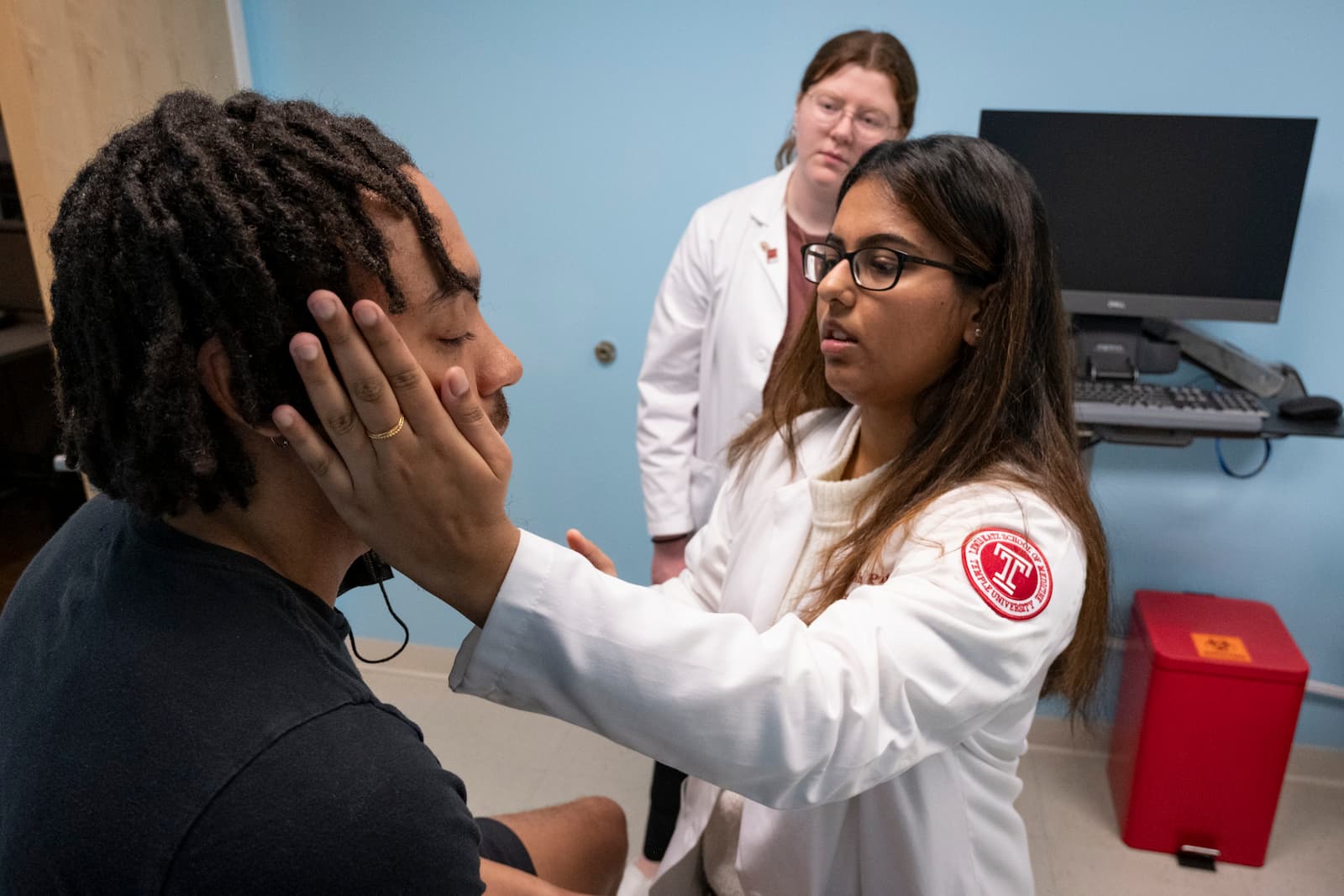The William Maul Measey Institute for Clinical Simulation and Patient Safety at the Lewis Katz School of Medicine has been granted full accreditation in human simulation by the Association of Standardized Patient Educators (ASPE).
Jacqueline Klevan, Director of the Katz School’s Standardized Patient (SP) program, represented the school at a ceremony honoring the first 16 programs from around the world to earn the new certification. It was held in Montreal during ASPE’s annual conference in June.
“The Standardized Patient program is a vital part of how we prepare future physicians and physician assistants,” said Amy J. Goldberg, MD, FACS, the Marjorie Joy Katz Dean. “This accreditation affirms that we are leading in this space—and it positions us to remain at the forefront as best practices and standards in clinical simulation continue to evolve.”
Gretchen Diemer, MD, MACP, Senior Associate Dean of Education, says the accreditation “reflects the forward-thinking nature of our simulation program and the expertise and skill of the staff at the William Maul Measey Institute.” She credits Klevan, specifically, as the “driver” of the SP program.
A standardized patient is someone who’s been trained to simulate in a “defined, consistent, and standardized manner,” a patient in medical situation, according to the William Maul Measey Institute, whose SP program was founded in 1999.
Standardized patients learn a case, based on an actual patient other than themselves, and are interviewed and examined by students as though they were that person in the doctor’s office or clinic.
The William Maul Measey Institute maintains a roster of 70 to 80 SPs at a given time, Klevan says. They come from a range of backgrounds. Many are retirees. Some are theater students and actors.
While SPs feature prominently in the development of medical students, particularly during Phase One of their education, and physician assistant students, Klevan says the program is also more frequently being tapped by a variety of learners across Temple Health and Temple University.
Internal Medicine and Emergency Medicine residents often work with SPs. In May, Klevan deployed a new program she developed with faculty for the Nephrology fellows. And in June, SPs participated in a training session titled “Reducing Bias in Maternity Health,” led by Dana Crawford, the noted psychologist.
At the ASPE conference in June, a poster submitted by Klevan and Faith Sullivan, a former project manager with the SP program, was awarded first place. Titled “Utilizing Simulated Methodology in an Undergraduate Pre-Professional Health Classroom,” it described their collaboration with Brian Hutler, JD, PhD, an Assistant Professor in Temple’s College of Liberal Arts, where, in front of Dr. Hutler’s honors bioethics students, Emergency Medicine faculty interviewed an SP presenting with suicidal thoughts. Dr. Hutler and a colleague occasionally paused the presentation to address the complexities of involuntary commitment.
They’ve come together to do this presentation during each of the last two academic years.
“Dr. Hutler has some experience with simulation and believes it’s a great learning methodology,” she says. “He saw this as an opportunity to introduce his students, many of whom are pre-health, to a more interactive kind of learning and a preview of what medical school is like.”
Dr. Diemer says the SP program is “absolutely critical” to developing clinically skilled and socially conscious physicians.
“The idea that you get to practice and get feedback in a safe environment is very formative for these students,” she says. “They’re honing their critical thinking and learning how to have the necessary conversations, including explaining things in a way that’s accessible to patients.”
She expects artificial intelligence to help reinforce the value of these encounters in the near future.
“I think technology can help us analyze—not replace—these interactions to ensure that the kinds of feedback the students are getting can be synthesized and consolidated,” Dr. Diemer says.
Applying for the ASPE accreditation “was an opportunity to highlight our strengths as a program,” Klevan says.
Among them is a renewed focus on collecting and incorporating SP feedback that’s unfolded over the last two years. Aside from the one-on-one interactions Dr. Diemer referenced, Klevan and her staff have worked to ensure SPs are treated as collaborators.
“What that means is that every change we consider, whether it be an evolution of a training approach or a policy addition, it’s done with the help of the SPs,” Klevan says.
For instance, roundtable discussions with SPs were conducted when the program assessed its standards around addressing physical exam skills and respecting patients’ comfort and modesty. Klevan says they’re also aiming to involve SPs earlier in the case development process as part of an effort to better reflect the North Philadelphia communities served by Temple Health in the teaching cases.
She credits Whitney V. Cabey, MD, Associate Professor of Clinical Emergency Medicine and an Assistant Professor at the Katz School’s Center for Urban Bioethics, and Adrienne L. Ligouri, MD, MPH, FACOG, Assistant Professor of Clinical Anesthesiology, among others, with “incorporating the SP voice into the [medical school] curriculum, really elevating it, and being responsive to the SP as part of the experience, not as some tool. They’re not simulators. They’re people.”
With that distinction, there is so much uncertainty, as is the case when any two people interact. Navigating that uncertainty is also part of being a physician or a physician assistant.
During a recent simulation at Temple University Hospital – Episcopal Campus, a small group of residents lined up to feel the carotid pulse of an SP who suddenly collapsed (as part of a simulation).
“One of the residents, before he did it, he introduced himself to the SP and shook his hand,” Klevan says. “And I thought, what an incredible moment, and a reminder that this is, in many ways, sacred work.”

